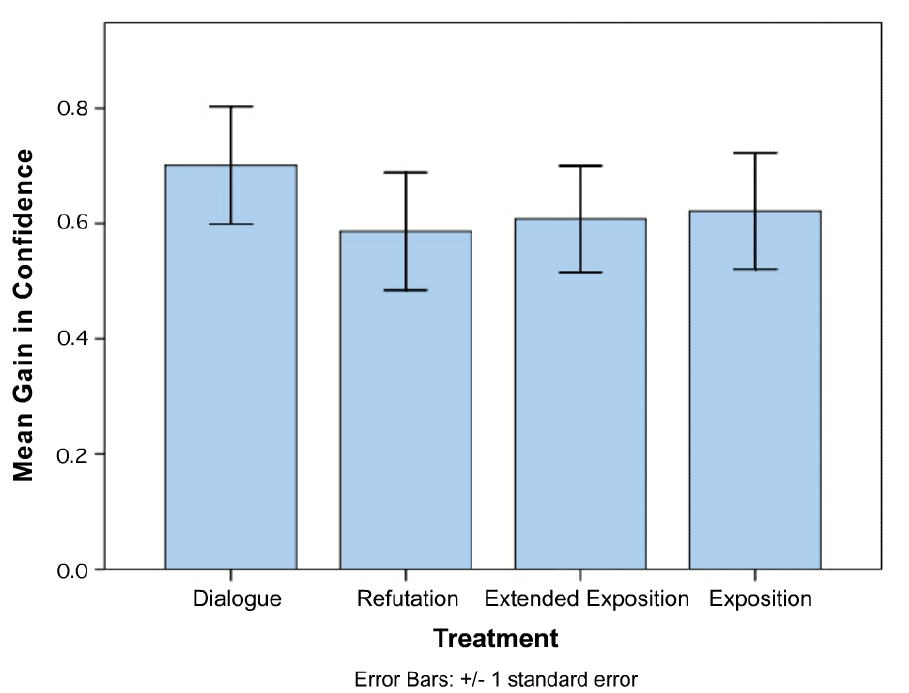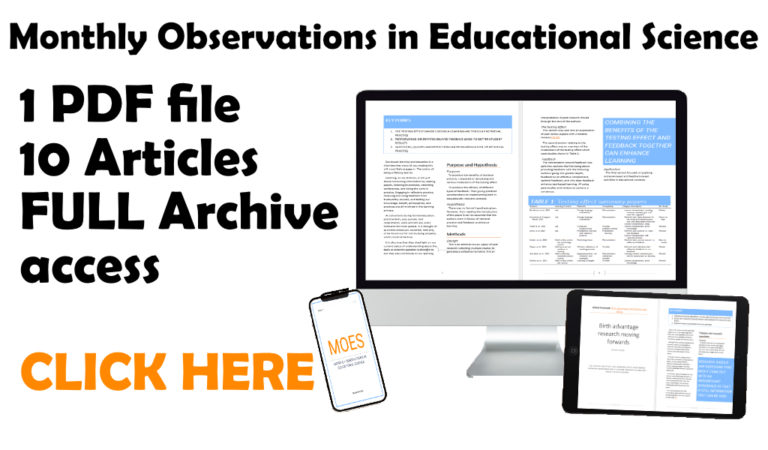Introduction
Students and learners that go into a class, lecture, or environment have ideas about what they expect to learn, which don’t always match the intended lesson.
Prior knowledge and beliefs built from lived experiences will educate individuals about how they think things work, but they may not be scientifically accurate, which makes the knowledge they have misconceptions.
Those misconceptions inflict damage in two ways: they give individuals a false sense of knowing, limiting the mental effort they invest in learning; and they interfere with memories of recently learned scientific conceptions.
This paper looked to explore how misconceptions can be used in multimedia mediums of teaching and communication.
Background
Some researchers characterise learners’ naïve views as coherent and theoretical observed commonalities between misconceptions and old scientific theories
support this view. ((Carey, S., 1986. Cognitive science and science education. American psychologist, 41(10), p.1123)) ((Vosniadou, S., 1994. Capturing and modeling the process of conceptual change. Learning and instruction, 4(1), pp.45-69.))
Others believe that students’ conceptions are not very systematic at all; rather, they are composed of fragments of knowledge, which are cobbled together to form explanations when the need arises. ((DiSessa, A.A., 1982. Unlearning Aristotelian physics: A study of knowledge-based learning. Cognitive science, 6(1), pp.37-75.)) ((DiSessa, A.A., 2014. A history of conceptual change research: Threads and fault lines.))
Either way, students go into learning situations with prior knowledge and beliefs that impact how they perceive and receive the new information.
Methods
2 types of presentation were tested, one called the exposition, which comprised a lecture-style presentation of correct physics information with accompanying diagrams, demonstrations, and animations. The other, called The Dialogue, contained a scripted dialogue between a student and a tutor, involving common alternative conceptions.
This was a repeated method from 2005 research later published in quantum tunnelling ((Muller, D.A., Sharma, M.D., Eklund, J. and Reimann, P., 2007. Conceptual change through vicarious learning in an authentic physics setting. Instructional Science, 35(6), pp.519-533.)), then with Newtonian mechanics ((Muller, D.A., Bewes, J., Sharma, M.D. and Reimann, P., 2008. Saying the wrong thing: Improving learning with multimedia by including misconceptions. Journal of Computer Assisted Learning, 24(2), pp.144-155.)).
In the mechanic’s studies, they investigated three additional treatments: the Refutation, identical in content to the Dialogue but narrated by a single speaker; the Extended Exposition, similar to the Exposition but with additional interesting information; and the Worked Examples treatment, again similar to the Exposition but with worked solutions to numerical problems. They also asked students to rate how much mental effort they invested while watching the multimedia on a nine-point Likert scale. They have validated this technique in many previous studies ((Paas, F., Tuovinen, J.E., Tabbers, H. and Van Gerven, P.W., 2003. Cognitive load measurement as a means to advance cognitive load theory. Educational psychologist, 38(1), pp.63-71.)).
Findings
It seems the older ideas inhibit the understanding of new scientific concepts. Exactly how they do this, however, has been a topic of debate, but exposing students to common misconceptions, even in non-interactive settings, can help them overcome these difficulties.
The authors proposed that misconception-based multimedia can alert students to key inconsistencies in their reasoning and help tether their old ideas to new, scientifically accurate ones.
The results show that only the inclusion of misconceptions in multimedia seemed to improve student learning, producing gains between half and one full standard deviation greater than the Exposition treatment. Results also indicate that students invest more mental effort in watching misconception-based treatments.
Interestingly, increases in student confidence do not reflect their increase in understanding as shown in the figure below.

These findings suggest that one of the ways in which misconceptions inhibit learning is by hindering the learner’s ability to evaluate the presented information in light of his or her prior knowledge.
These findings suggest misconceptions inhibit learning by hindering the learner’s ability to evaluate the presented information by considering his or her prior knowledge. Advanced students displayed much less over-confidence than the poorer performing Fundamental students. ((Kleitman, S. and Stankov, L., 2001. Ecological and person‐oriented aspects of metacognitive processes in test‐taking. Applied Cognitive Psychology: The Official Journal of the Society for Applied Research in Memory and Cognition, 15(3), pp.321-341.))
The authors of this paper don’t believe fundamental students are inherently less effective at executing metacognitive strategies than advanced students. The deficiency lies not in the knowledge evaluation process but in the knowledge with which they are evaluating.
If the words are familiar like the situations discussed with concepts explained plainly and, importantly, the learner believes they already know a general idea, learners don’t pay meticulous attention to every detail in the multimedia presentation with reduced mental effort in learning.
This could explain why students in the fundamentals and regular streams reported high levels of confidence on the pre-test, even when answering less than 50% of questions correctly. It also accounts for the similar gains in confidence that were observed across all treatments, whether much learning occurred.
It helps to understand why students who viewed a non-misconception-based multimedia treatment invested less mental effort than their peers who viewed the Dialogue or Refutation.
Discussion
Besides giving students a false sense of knowing and interfering with memories of recently learned scientific conceptions, misconceptions appear to inhibit learning through the phenomenon of proactive interference which is said to occur when previously learned schemas inhibit the learning of new knowledge or skills. ((Eysenck, M.W. and Keane, M.T., 2020. _Cognitive psychology: A student’s handbook_. Psychology press.))
Proactive interference means that if any part of the presentation were perceived correctly, even though it conflicted with a student’s prior knowledge, it would probably not make a lasting change to the student’s long-term memory.
Kane and Engle ((Kane, M.J. and Engle, R.W., 2000. Working-memory capacity, proactive interference, and divided attention: limits on long-term memory retrieval. Journal of Experimental Psychology: Learning, Memory, and Cognition, 26(2), p.336.)) showed that learners with high attentional capacity were better at avoiding proactive interference than those with low attentional capacity. However, once an additional, unrelated task was performed by the high-capacity learners, their performance was no better than the low attention group. This suggests another reason the investment of mental effort is vital to learning when misconceptions are involved – it helps reduce the interference of previously held beliefs.
To unlearn a misconception, we present unfamiliar ideas to a learner who has difficulty interpreting because of the misconception schema. This arguably demands more mental effort than if the learner had no prior knowledge on the subject at all.
If they can accommodate the new idea, they will then face additional ideas that build upon it. However, when they go back to retrieve the idea from long-term memory, it may suffer interference because of the old conception.
However, older ideas seem to have greater robustness than newer ones. ((Baddeley, A.D., 1997. Human memory: Theory and practice. psychology press.)) Learning a new conception is therefore like trying to understand little pieces of incomprehensible new knowledge while preconceptions turn the attention away from new learning to the next construct
One reason for the effectiveness of the Dialogue and Refutation is that they overcome metacognitive impairment. By presenting both the misconception and the scientifically accurate view, it made the student consider two interpretations of the same phenomenon. This raises the average mental effort invested in the treatment and can lead the student to dissatisfaction with his or her current mental models, which could be the first step to conceptual change. ((Posner, G.J., Strike, K.A., Hewson, P.W. and Gertzog, W.A., 1982. Accommodation of a scientific conception: Toward a theory of conceptual change. _Science education_, _66_(2), pp.211-227.))
Peer Instruction ((Mazur, E., 1999. Peer instruction: A user’s manual.)), Interactive Lecture Demonstrations ((Thornton, R.K. and Sokoloff, D.R., 1998. Assessing student learning of Newton’s laws: The force and motion conceptual evaluation and the evaluation of active learning laboratory and lecture curricula. american Journal of Physics, 66(4), pp.338-352.)), Tutorials in Introductory Physics, ((McDermott, L.C. and Shaffer, P.S., 2001. Tutorials in introductory physics and homework package. Englewood Cliffs, NJ: Prentice Hall.)) and Workshop Tutorials ((Sharma, M.D., Mendez, A. and O’Byrne, J.W., 2005. The relationship between attendance in student‐centred physics tutorials and performance in university examinations. International Journal of Science Education, 27(11), pp.1375-1389.)) have all been shown to dramatically improve student learning.
Interpretation
They discussed many of my interpretations of the results and methods in the discussion section of this paper with many of the connections I would make with cognitive load theory and proactive inference being mentioned.
With the prior knowledge affecting learners’ reception of the new and potentially challenging information being brought up, I think some assumptions could be tested as to the magnitude of their effects.
They mentioned a false sense of knowing as a way misconceptions inflict damage on a learner, but with no way to measure that false sense of knowledge and with no evidence that the conceptions before the interventions were misconceptions to start with.
My assumptions would be, alongside the thinking of this paper, that if the prior knowledge or preconception of the learner was true, the misconceptions brought up in the dialogue intervention would not create the increased mental load mentioned or the increased attention supposedly required for learning. Therefore, if the conceptions are not challenged by the misconceptions, the learner could assume they are correct.
This suggests that the more misconceptions included in the dialogue, the more likely false conceptions are caught. If the learner’s conceptions are not included in the dialogue, it would be safe to assume they were correct.
The thought that if you think you know it, you don’t pay attention rains true in much of this research. My questions would then extend towards those that think they are wrong, or that there is more to learn. Does the direction of the prior knowledge from perceived knowledge or gaps of knowledge impact the direction of the attention paid to the learner?
My assumption from the discussion in this research is that those that think there is more to learn will pay more attention even if the conception they had to start with was correct. These individuals would, therefore, be put under the label of lifelong learners or critical thinkers.
Conclusion
Allowing comparison of preconceptions and evidenced-based science in discourse can create dissonance in learners with misconceptions by increasing cognitive load directing it at challenging prior beliefs.



